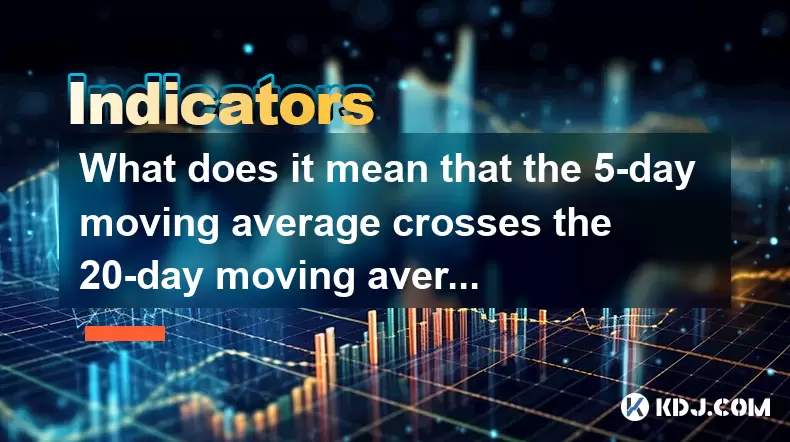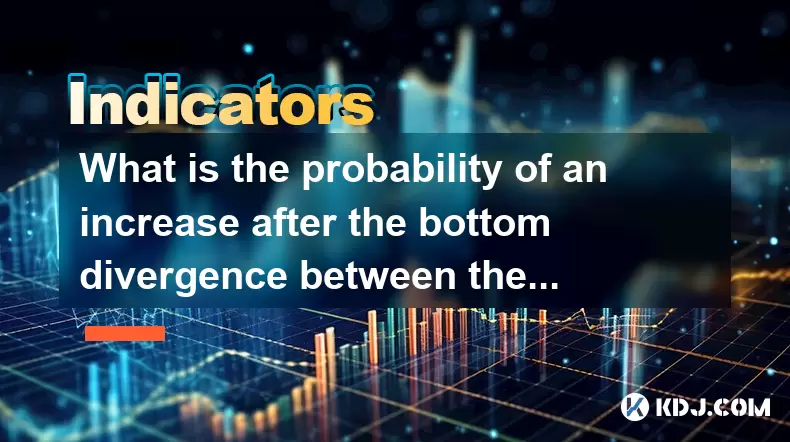-
 Bitcoin
Bitcoin $115100
-2.99% -
 Ethereum
Ethereum $3642
-1.38% -
 XRP
XRP $3.027
-5.51% -
 Tether USDt
Tether USDt $1.000
-0.05% -
 BNB
BNB $763.4
-1.32% -
 Solana
Solana $177.2
-5.42% -
 USDC
USDC $0.9999
-0.02% -
 Dogecoin
Dogecoin $0.2247
-6.47% -
 TRON
TRON $0.3135
0.23% -
 Cardano
Cardano $0.7824
-4.46% -
 Hyperliquid
Hyperliquid $42.53
-0.97% -
 Stellar
Stellar $0.4096
-6.09% -
 Sui
Sui $3.662
-2.61% -
 Chainlink
Chainlink $17.63
-3.57% -
 Bitcoin Cash
Bitcoin Cash $536.3
2.94% -
 Hedera
Hedera $0.2450
0.34% -
 Avalanche
Avalanche $23.23
-3.15% -
 Litecoin
Litecoin $112.2
-1.23% -
 UNUS SED LEO
UNUS SED LEO $8.976
-0.30% -
 Shiba Inu
Shiba Inu $0.00001341
-2.72% -
 Toncoin
Toncoin $3.101
-2.44% -
 Ethena USDe
Ethena USDe $1.001
-0.05% -
 Uniswap
Uniswap $10.08
-1.97% -
 Polkadot
Polkadot $3.938
-2.77% -
 Monero
Monero $323.9
0.87% -
 Dai
Dai $0.9999
-0.02% -
 Bitget Token
Bitget Token $4.481
-1.69% -
 Pepe
Pepe $0.00001199
-5.94% -
 Aave
Aave $288.2
-0.68% -
 Cronos
Cronos $0.1279
0.36%
What does it mean that the 5-day moving average crosses the 20-day moving average but the volume is insufficient? Is it suitable for chasing up?
A 5DMA crossing above the 20DMA with low volume may signal weak momentum and increase the risk of false breakouts in crypto trading.
Jun 18, 2025 at 01:21 pm

Understanding Moving Averages in Cryptocurrency Trading
In the realm of cryptocurrency trading, moving averages are among the most widely used technical indicators. These tools help traders identify potential trends by smoothing out price data over a specified period. The 5-day moving average (5DMA) calculates the average closing price of an asset over the past five days, while the 20-day moving average (20DMA) does the same for the last 20 days. When these two lines intersect, it’s referred to as a crossover, which can signal either a bullish or bearish trend depending on the direction.
A bullish crossover occurs when the 5DMA crosses above the 20DMA, often interpreted as a sign that the short-term momentum is stronger than the long-term trend. However, this interpretation becomes more complex when volume — the number of assets traded within a specific time frame — doesn’t confirm the movement.
Key Insight: A moving average crossover without sufficient volume may indicate weak market conviction and could lead to false signals.
What Happens When Volume Is Insufficient?
Volume plays a crucial role in validating price movements. In traditional technical analysis, high volume accompanying a price move suggests strong investor interest and confirms the strength of the trend. Conversely, low volume during a crossover implies that few traders are actively participating in the move.
This lack of participation might mean:
- The rally lacks genuine support from institutional or large retail investors.
- The price increase is driven by automated bots or minor order flows.
- There's no substantial news or fundamental catalyst behind the movement.
When the 5DMA crosses above the 20DMA but volume remains low, it raises concerns about the sustainability of the upward trend. Traders who rely solely on moving averages without considering volume may find themselves entering positions that quickly reverse.
Important Note: Low volume during a crossover may indicate a trap set by market makers to lure retail traders into buying before initiating a dump.
How to Analyze This Scenario Step-by-Step
If you're evaluating whether to chase up after seeing a 5DMA crossing above the 20DMA with insufficient volume, follow this detailed process:
- Verify the crossover: Confirm that the 5DMA has indeed crossed above the 20DMA on your charting platform. Use candlestick charts with both moving averages plotted.
- Check volume levels: Compare current volume levels with the average volume over the previous 20 days. If current volume is significantly below average, proceed with caution.
- Assess recent price action: Look at how the price behaved before the crossover. Was it trending upwards or consolidating? A sudden breakout without prior buildup may be suspicious.
- Look for external factors: Investigate if there was any significant news, announcements, or macroeconomic events that could justify the price move.
- Evaluate market sentiment: Use tools like social media sentiment analysis or options open interest to gauge whether broader market participants are aligned with the move.
Each of these steps should be performed methodically using reliable platforms such as TradingView, Binance, or CoinMarketCap.
Critical Detail: Always cross-reference volume with other indicators like RSI or MACD to avoid making decisions based on isolated signals.
Is It Suitable to Chase Up After Such a Crossover?
Chasing up means entering a trade after the price has already moved significantly, hoping to ride the momentum further. In the case where the 5DMA crosses above the 20DMA but volume is insufficient, chasing up becomes highly speculative.
Here’s why it may not be suitable:
- False breakouts are common: Without volume support, the uptrend may quickly reverse, trapping buyers at higher prices.
- Slippage risks increase: Especially in less liquid altcoins, trying to enter at or near the current price may result in poor execution.
- Stop-loss placement becomes tricky: Volatile and unsupported moves make it hard to set effective stop-loss levels without risking too much capital.
Instead of chasing, consider waiting for a pullback or retest of the moving averages with increased volume. This allows for better entry points and reduces exposure to early reversals.
Caution Advised: Chasing entries without volume confirmation often leads to losses, especially in volatile crypto markets.
Alternative Strategies to Consider
Rather than jumping into a position immediately, traders can adopt alternative strategies that align with cautious market behavior:
- Wait for confirmation: Observe whether the price continues to hold above the 20DMA for multiple days with rising volume. This increases the likelihood of a sustainable trend.
- Use limit orders: Place buy limit orders slightly below the current market price to avoid emotional decision-making and slippage.
- Combine with other indicators: Overlay oscillators like Relative Strength Index (RSI) or Moving Average Convergence Divergence (MACD) to filter out weak signals.
- Monitor order books: Real-time order book analysis can reveal whether large buy walls are forming, indicating real demand.
These strategies help reduce risk and improve the probability of successful trades.
Strategic Tip: Combining moving averages with volume and additional indicators provides a more robust trading framework.
Frequently Asked Questions
Q: Can a 5DMA/20DMA crossover still work without high volume?
Yes, technically it can, but historically, such crossovers have a lower success rate. Volume acts as a confirmation tool, and its absence increases the chance of a false signal.
Q: How do I check average volume on a cryptocurrency chart?
Most platforms like TradingView allow you to enable volume indicators. You can calculate average volume manually by summing the volume over a set period and dividing by the number of days.
Q: Should I always wait for volume confirmation before entering a trade?
While not mandatory, doing so significantly improves your odds. Many professional traders use volume as a key factor in confirming trend validity.
Q: Are there specific cryptocurrencies where volume matters less?
Generally, volume matters across all assets. However, in highly illiquid altcoins, volume can be misleading due to manipulation or thin order books. Stick to major pairs like BTC, ETH, or SOL for more reliable signals.
Disclaimer:info@kdj.com
The information provided is not trading advice. kdj.com does not assume any responsibility for any investments made based on the information provided in this article. Cryptocurrencies are highly volatile and it is highly recommended that you invest with caution after thorough research!
If you believe that the content used on this website infringes your copyright, please contact us immediately (info@kdj.com) and we will delete it promptly.
- Solana, Altcoins, and Coinbase: What's the Buzz?
- 2025-07-26 06:30:12
- Ethereum, Pepeto Presale, and Market Appetite: What's the Buzz?
- 2025-07-26 06:50:12
- TOKEN6900: The Next Big Meme Coin? Presale Heats Up!
- 2025-07-26 05:30:35
- ONDO Breakout Assessment: Whales, Wallets, and What's Next?
- 2025-07-26 05:30:35
- Kaspa's Strongest Month REVEALED: New Data Shocks KAS Traders!
- 2025-07-26 04:30:12
- Cross-Border Payments Revolution: Stablecoins and Payment Providers Leading the Charge
- 2025-07-26 04:50:12
Related knowledge

What does it mean when the price breaks through the 60-day moving average with a large volume but shrinks the next day?
Jul 26,2025 at 06:01am
Understanding the 60-Day Moving Average in Cryptocurrency TradingThe 60-day moving average (60DMA) is a widely used technical indicator in the cryptoc...

What does the golden cross of EMA12 and EMA26 but the low trading volume reflect?
Jul 26,2025 at 06:44am
Understanding the Golden Cross in EMA12 and EMA26The golden cross is a widely recognized technical indicator in the cryptocurrency market, signaling a...

What does it mean when the price breaks through the 30-day moving average and is accompanied by a large volume?
Jul 26,2025 at 03:35am
Understanding the 30-Day Moving Average in Cryptocurrency TradingThe 30-day moving average (MA) is a widely used technical indicator in the cryptocurr...

What does it mean when the MACD bar turns from negative to positive?
Jul 26,2025 at 05:01am
Understanding the MACD Indicator in Cryptocurrency TradingThe Moving Average Convergence Divergence (MACD) is a widely used technical analysis tool in...

Does the golden cross of the KDJ three lines at the annual line level indicate a turning point in the big cycle?
Jul 26,2025 at 01:35am
Understanding the KDJ Indicator in Cryptocurrency TradingThe KDJ indicator is a momentum oscillator widely used in technical analysis, especially with...

What is the probability of an increase after the bottom divergence between the KDJ indicator and the trading volume?
Jul 26,2025 at 01:29am
Understanding KDJ Indicator and Its Role in Technical AnalysisThe KDJ indicator is a momentum oscillator widely used in cryptocurrency trading to iden...

What does it mean when the price breaks through the 60-day moving average with a large volume but shrinks the next day?
Jul 26,2025 at 06:01am
Understanding the 60-Day Moving Average in Cryptocurrency TradingThe 60-day moving average (60DMA) is a widely used technical indicator in the cryptoc...

What does the golden cross of EMA12 and EMA26 but the low trading volume reflect?
Jul 26,2025 at 06:44am
Understanding the Golden Cross in EMA12 and EMA26The golden cross is a widely recognized technical indicator in the cryptocurrency market, signaling a...

What does it mean when the price breaks through the 30-day moving average and is accompanied by a large volume?
Jul 26,2025 at 03:35am
Understanding the 30-Day Moving Average in Cryptocurrency TradingThe 30-day moving average (MA) is a widely used technical indicator in the cryptocurr...

What does it mean when the MACD bar turns from negative to positive?
Jul 26,2025 at 05:01am
Understanding the MACD Indicator in Cryptocurrency TradingThe Moving Average Convergence Divergence (MACD) is a widely used technical analysis tool in...

Does the golden cross of the KDJ three lines at the annual line level indicate a turning point in the big cycle?
Jul 26,2025 at 01:35am
Understanding the KDJ Indicator in Cryptocurrency TradingThe KDJ indicator is a momentum oscillator widely used in technical analysis, especially with...

What is the probability of an increase after the bottom divergence between the KDJ indicator and the trading volume?
Jul 26,2025 at 01:29am
Understanding KDJ Indicator and Its Role in Technical AnalysisThe KDJ indicator is a momentum oscillator widely used in cryptocurrency trading to iden...
See all articles

























































































